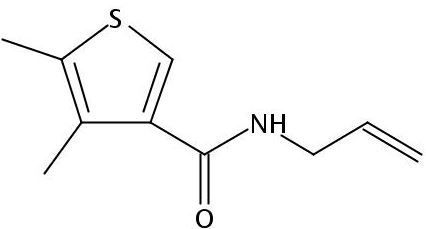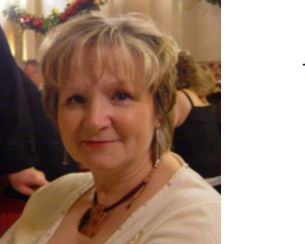Silthiofam-de TMS (CAS # 1789818-21-8)
Chem Service Certified Reference Standards
![]()
BUY HERE

Know before you grow
First things first, you need to be aware of how to properly maintain healthy soil to help support your local environment and habitat. The U.S. Department of Agriculture explained that improper pesticides use in agriculture often results in contamination of local water supplies – this is due to either leaching or runoff, which seep into ground water or surface water. It's important to note that studies have revealed that these pesticides have been found not just in agricultural areas, but also urban areas as well, noted the source. This means that even the smallest gardener needs to ensure they are using their products appropriately.
Before you start planting your plot – regardless of size – you need to carefully read the directions on the product's label, warned the National Pesticide Information Center. This will prevent you from using the wrong chemicals on your property. It's crucial to do careful homework before using pesticides because conditions vary from area to area.
The Environmental Finance Center at the University of Louisville explained that there will are three common ways in which people are exposed to contaminants: Ingestion, physical contact and inhalation. This is another reason why you need to carefully read labeled instructions. All three of these actions could happen during the gardening process, whether you accidentally rub your face and get some in your mouth, or touch and inhale them as you work. Length of exposure affects health conditions, so you need to be cautious as you work.
Pesticides levels are at their highest when you first use them, as they tend to break down with weathering and processing, and should be handled accordingly as such. However, by the time the food reaches your table – depending if you followed directions appropriately, of course – the chemicals should be a legal limit, explained the California Department of Pesticide Regulation.
Test before you eat
Before you start chowing down on your fresh produce, you need to do your part in removing as many pesticides from the products prior to consumption. The Environmental Protection Agency does its part in testing chemical levels before food hits grocery store shelves, but it's still necessary for you to take precautions as well. First, consider what foods have the highest toxin levels. Every year, the Environmental Working Group releases a list of the "Dirty Dozen." This is a guide of the pesticides in produce for shoppers to consult before selecting their seasonal fruits. This year, strawberries topped the list for highest amount of post-harvest chemical residue. What can you do? Sonya Lunder, EWG Senior Analyst gave some clean eating insight in the Dirty Dozen's release.
"Fruits and vegetables are important for your health," Lunder explained. "But for those on the Dirty Dozen, we recommend buying the organic versions if you want to avoid pesticides on your food."
You don't have to stop buying strawberries, or other Dirty Dozen produce, you simply have to be smart about how you treat them before you and your family consume them. Always rinse or thoroughly scrub the surface of produce, FoodInsight.org shared. Scrubbing produce with firmer skin will dissolve that waxy layer of residue, but you can also peel skin off to get rid of that layer as well. While all foods should be rinsed properly, just know that any produce you buy that is on the Dirty Dozen list should receive a little extra attention.
CONTACT US
Tel: +44 (0) 151 649 4000
Email: marketing@greyhoundchrom.com
FOLLOW US
YOU MAY ALSO BE INTERESTED IN OUR NEWSLETTER
About The Author
Susan Massie, Sales & Marketing Director, Greyhound Chromatography and Allied Chemicals Email: sue@greyhoundchrom.com
Susan Massie is the Sales & Marketing Director for Greyhound Chromatography and Allied Chemicals, affectionately known as 'Greyhound' in our scientific community. Greyhound was founded by Susan's husband Paul Massie more than 40 years ago, Susan hasn't been in the business for all of that time but has been involved with Greyhound for over 19 years. Greyhound continues to grow, expanding into new markets and taking on the challenges of our ever changing environment. It's heartwarming to witness the world waking up to the fact that we are damaging our planet on a daily basis. Every action we take has a direct effect on our planet and the world we leave behind for future generations. Susan is passionate about climate change and is happy to work in an industry that can have a direct effect on reducing the impact of our actions on the environment. All of the team at Greyhound take our responsibilities very seriously, the products that we supply are used by the world's leading scientists and chemists as they endeavour to monitor and repair the environment. All is not lost, if we all take responsibility for our actions, from reducing our waste and reusing or recycling our material collateral we can make a difference. The internet is full of useful advice and guidance, Susan is proud to contribute to that wealth of knowledge whenever she can.
Greyhound prides itself on personal service which provides prompt, efficient, cost-effective, safe delivery of all products. Greyhound provides technical advice and distribution of Certified Reference Standards and Materials, Laboratory Consumables, Solvents and Reagents across all scientific disciplines. Greyhound Chromatography offers over 1 Million products from its UK warehouse. The team at Greyhound are proud to support the work of the world's leading scientists and chemists as they challenge the abuse of our planet and try to make a difference to the world we leave behind for our ancestors.
You can view Susan's Linked In Profile here https://www.linkedin.com/in/susan-massie-79ab4121/
You can view Greyhound Chromatography’s LinkedIn page here https://www.linkedin.com/company/greyhound-chromatography/



.jpg)













